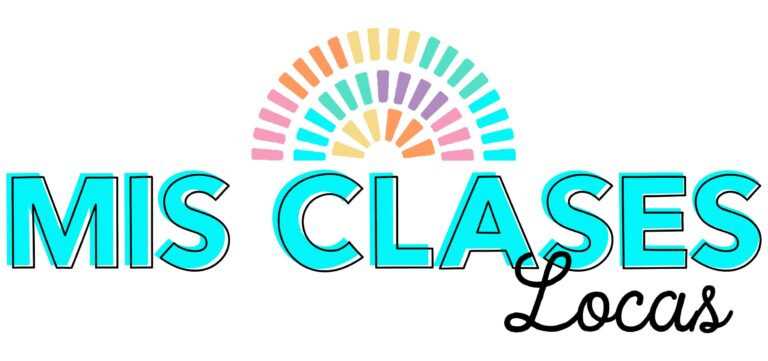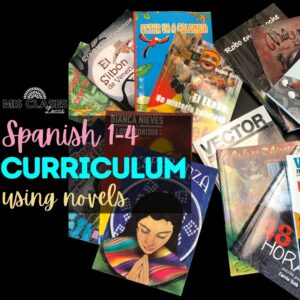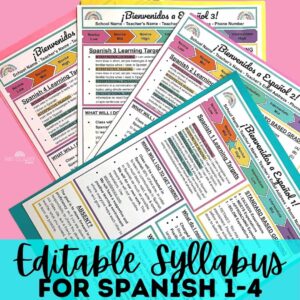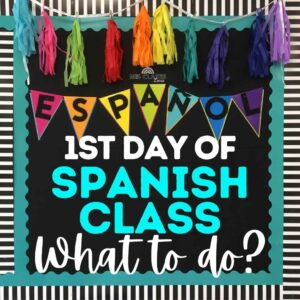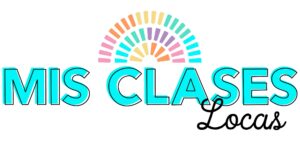Earlier this week I received a comment on my post about this year’s curriculum and how I teach without a textbook from the awesome Amanda (@ADiazMora on Twitter) that really got me thinking. It was a simple and straightforward question:
“How do you review with your 2’s & 4’s?”
As I started thinking about how I would answer, I knew I needed more space, because the answer to how do I review is “I don’t.”
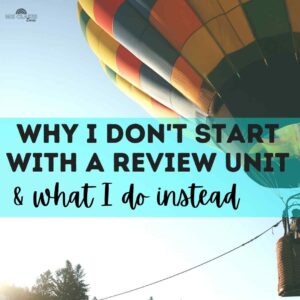
Why I don’t start the school year with a review unit
Placement Tests Kill Dreams
Lately, I have seen a lot of teachers asking for “placement tests” to give to students as they enter a certain level of language. Why would you ever subject your students to this? I would guess that most “tests” that would fall under this category are district-wide, NOT communication based, and instead of a mix of multiple choice, true/false, and fill in the blank that are geared to point out what students DON’T KNOW. So lets take a student who already feels like they lost all their language skill over the summer and show them all of their deficiencies with a test they are bound to fail. Do you have to give some kind of baseline assessment? How about instead an interpretive reading/listening passage, a free write, or speaking prompt that allows students to Show What They Know.
*Disclaimer* In case you think I am preaching from some high horse, my first year teaching I gave a Placement Test (that was given to me with a ton of resources for the ancient En Español textbook). They all bombed it, felt terrible about themselves, and five students dropped out of Spanish III the first week. Even worse, I then plunged ahead into the “review” chapter of the textbook drilling every verb form that they had covered in the past two years that was obviously taught, not caught. Why did I do it? I was a department of one at a school that just had these old textbooks and I did not know any better. I had year to discover the awesome #langchat community and did not know anything about comprehensible input. So know that I know better, I have an obligation to do better. If I could do it again, here is what I would do:
What I do instead
How to Start the School Year in upper level classes
I have written quite a few posts with plans for what to do during the first week of Spanish class (1st Week of Spanish Class Using Comprehensible Input, 1st Week of Spanish Class – Daily Plans, Unit 1 & 1st Day of Spanish Class). If you are starting at a new school, or will have all students who are new to you, I would recommend following this week long Unit 1 that focuses on proficiency, procedures and positive people. I do not consider this review since one of the main activities is the Proficiency Puzzle, which helps students who are new to the concept of language proficiency learn to distinguish proficiency levels, and help to figure out what will be expected of them during the year (per your Syllabus). You can see my Daily Plans post for exactly what I did each day last year at a new school. You can download everything you need in this Back to School Bundle. Even if you want to skip review altogether there are still a lot of logistics and procedures that have to be taken care of during the first couple days of school, to ensure a smooth year.
If your students are already proficiency experts, here are some ideas for getting to know you activities for the first couple of days before jumping into your first unit or easy novel:
Find Someone Who (update 2017)
I plan to start the first day of Spanish 2 and 3 with a Find Someone Who people seek and sign. This will get them to use their past tense, talk about what they are interested in, and move around. Then after talking as a class about what people did over the summer, they can do a free write about what they did or what a classmate did. There is a great baseline writing assessment.
La Tomatina mini unit
This fun fiesta happens to be right at the start of school, the last Wednesday of August. Make your first unit this mini cultural unit by Martina Bex, which will get students reading and listening to Spanish right away about a topic they will be interested in. Then build relationships with a food fight by Amy Lenord, which uses the game “snowball fight” with red paper to help students get to know each other. We did this activity two years ago when Amy posted it and the students had a blast!
Special Person Interviews
Bryce Hedstrom has written extensively on using special person interviews in language class. Make sure that for an upper-level class you start with the basics to get to know each other if needed, or if you and the students already know each other, dive right into the past with what happened over the summer. After a few, once students are back in the routine, you could even mix it up where students interview each other in small groups and then report back to the class.
I have multiple units now that make it very easy to start with personal interviews Super 7 (present, imperfect & preterite), Super 16, or even Super 7 French!. Read How to start the year with High Frequency Words to find out how I use them.
Music Bracket
Many people loved music brackets for March, but there is no reason you can not start the year with this engaging music activity. Let students have input in choosing the authentic songs that will be a part of the bracket while defending why in Spanish. Students get to listen to authentic songs, you get new material to talk and debate about in the target language and students think they are “wasting time” by just listening to music. There are so many things you can do each round to mix it up such as investigating the artist, genre, or country, ordering the lyrics, focusing on high-frequency vocabulary, singing the chorus, dancing, and more. This could be your class starter for a few weeks, or a mini week-long music unit.
If you need more ideas, here are Fun Ice Breakers for any class.
Read an Easy Novel
- Sp2 – Brandon Brown Quiere un Perro
- Sp3 – Esperanza
- Sp4 – Robo en la Noche (past tense)
If you are familiar with these books they are all labeled “level 1,” yet we read them at pretty much any class level. Why? They build confidence! These were the first books these classes had ever read, so I wanted them to feel accomplished, proud, and ready to tackle the rest of the year. Students enjoyed reading in class and novels seemed “easy” and enjoyable.
For example, this particular Spanish 4 class chose almost every day to sit on the floor “kindergarten style” with pillows and blankets and have me (and later another dramatic student) read to them. I projected discussion questions, we discussed them as a class and then moved on to the next chapter. We did not take vocab chapter quizzes, write the reading comprehension questions in full sentences, or really do much other than reading and discuss in Spanish. This input was the review but in context. The next book they did was the much more difficult La Calaca Alegre in a more in-depth class novel study, and they did amazing.
Last year at a new school, who had never read novels, we also started with easy novels, Tumba in Spanish 2 and Robo en la Noche (past tense) in Spanish 3. Many students later said that these first books were their favorites of the year. So if you are thinking about getting class sets of novels, I encourage you to start easy. You can see my plan for what I will teach at all levels this year here. If you do not have class sets, you could start the year with the free reading, where students get to choose and read a book of their own in Spanish, with your guidance to make sure they do not pick one that is too hard.
So, in a way you could say that reading an easy novel IS our review, but it is disguised in a way that is comprehensible, new, fresh, and exciting for students. Do you review? Please feel free to defend your reasoning and prove me wrong in the comments!

